#la tène culture
Explore tagged Tumblr posts
Text
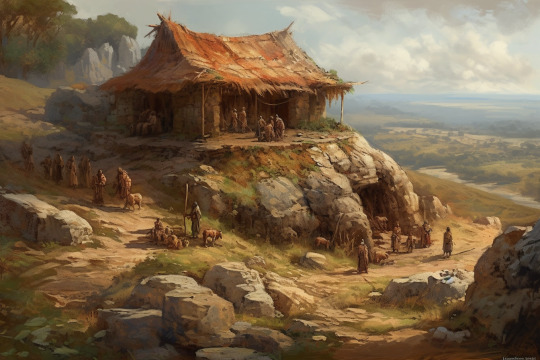
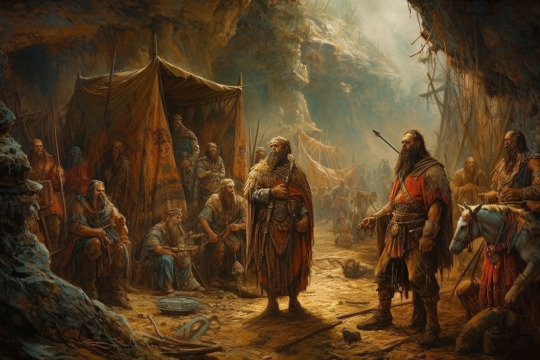
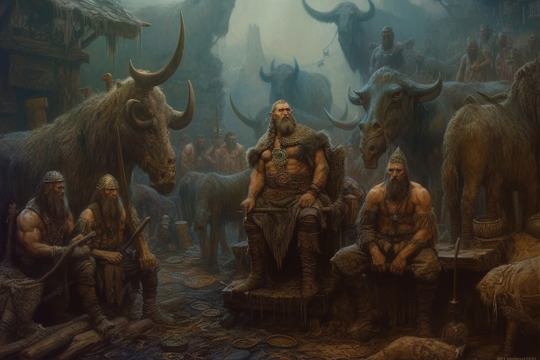
I directed Midjourney to make pictures of the the Yamnaya Culture (first image) and the La Tène Culture (second and third) with a good deal of fantastic latitude. Those cows … wow. by Midjourney v5
3 notes
·
View notes
Text







The Ipswich Torcs
Gold Torcs Found Together Buried About 75 BCE, Near Ipswich, Suffolk, The British Museum, London
All were made from two twisted solid bars. Four have cast terminals ornamented in high relief: they can be paired but their patterns are not identical.
#iron age#torc#gold#wealth#archaeology#La Tène#designs#design work#ancient cultures#ancient craft#ancient living#prehistoric#prehistory#ancient#status#British Museum#ipswich Torcs
279 notes
·
View notes
Text

Ancient Celtic Helmet Is the Oldest Ever Found in Poland
Unearthed at the Łysa Góra archaeological site, the artifact, some 2,300 years old, is a prime example of Celtic metalworking
Archaeologists in Poland have unearthed a horde of 300 artifacts dating back to the fourth century B.C.E. Found at the Łysa Góra site in the region of Mazovia, near Warsaw, the trove includes iron axes, scissors and, most notably, a rare Celtic helmet.
A team from Warsaw’s State Archaeological Museum and University of Warsaw’s Department of Archaeology has been excavating in Łysa Góra since the spring. According to a statement by the team, the helmet was buried in a charcoal pit, along with four iron axes.
Though it was damaged by age, researchers determined the “spectacular” helmet was originally shaped like a cone, possessing a separate curved neck piece and decorated with etched lines. Its discovery has changed the team’s perceptions of the Celts—a group of Central European tribes who thrived during the Iron Age, from 1200 B.C.E. until 50 C.E.

The helmet is the first artifact of its kind to be found in Poland, as excavation leader Bartłomiej Kaczyński, of the archaeological museum, tells Science in Poland’s Ewelina Krajczyńska-Wujec. Before, only one other, much newer Celtic helmet had been discovered: a first-century piece found in the southern village of Siemiechów. The Łysa Góra helmet is at least 2,300 years old.
“At first we thought it might be some kind of ancient vessel, because bronze vessels are much more common on Polish soil than helmets,” Kaczyński tells Science in Poland, per Newsweek’s Aristos Georgiou. Then, the artifact’s neck piece—an arched plate near its edge—prompted archaeologist Andrzej Maciałowicz to suggest it could be a helmet.
Based on the artifact’s shape, and the fact that its tip was held together by a double knob, researchers concluded the piece is an early La Tène helmet. The Celtic culture of La Tène—French for “the shallows”—is named for Lake Neuchâtel in Switzerland, where researchers first found La Tène objects in the late-1800s, per ARTnews’ George Nelson. The culture formed around the fifth century B.C.E., about when Celts came into contact with Etruscan and Greek people from south of the Swiss Alps.
The La Tène style of metalworking developed between the fourth and third centuries B.C.E., and examples of it are “very rare,” per Science in Poland. While 1970s and ‘80s excavations at Łysa Góra revealed some small La Tène artifacts, researchers assumed they ended up in Poland via trading.
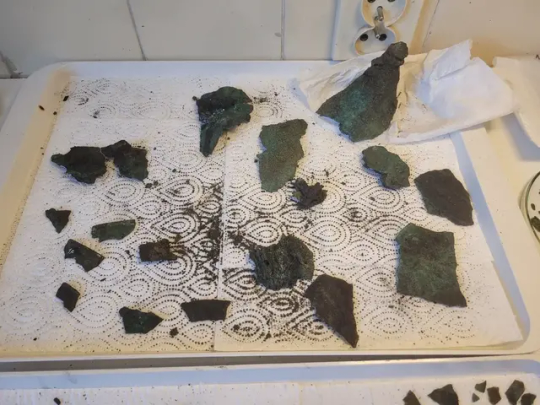


The recently discovered helmet, on the other hand, is an example of “the most advanced Celtic metallurgy,” Kaczyński says, and the piece was seemingly owned by a Celt, per Newsweek. The La Tène helmet’s presence in northern Poland changes researchers’ perceptions of the reach of the Celtic world in the pre-Roman period.
The other artifacts the research team found illustrate the ancient Celts’ proclivity for animal husbandry and farming: Blades from shears might have been used to cut sheeps’ wool, and scythes might have cut grain or grass. According to a statement by the archaeological museum, the researchers also found a collection of glass, amber and stone artifacts, including jewelry—bracelets, ornate necklaces and rings.
The helmet was taken to the State Archaeological Museum’s conservation department, where an expert in iron and bronze artifacts will spend several months conserving its pieces. As Kaczyński tells Science in Poland, the research team began excavating Łysa Góra to help construct an educational trail through the site. But the team’s “multitude of discoveries” indicates they may have more archaeological work to do than they thought.
By Sonja Anderson.

#Ancient Celtic Helmet Is the Oldest Ever Found in Poland#Łysa Góra archaeological site#war helmet#La Tène helmet#ancient artifacts#archeology#archeolgst#history#history news#ancient history#ancient culture#ancient civilizations#iron age#celtic history
50 notes
·
View notes
Photo

La Tène culture was a European Iron Age culture. It existed from about 450 BCE to the Roman conquest in the 1st century BCE. It was a successor of the Hallstatt culture and is generally considered one of the root cultures of the Celtic people. It is named after the site of La Tène on Lake Neuchâtel in Switzerland.
41 notes
·
View notes
Photo
The Hallstatt culture was the predominant Western and Central European archaeological culture of the Late Bronze Age (Hallstatt A, Hallstatt B) from the 12th to 8th centuries BC and Early Iron Age Europe (Hallstatt C, Hallstatt D) from the 8th to 6th centuries BC, developing out of the Urnfield culture of the 12th century BC (Late Bronze Age) and followed in much of its area by the La Tène culture. It is commonly associated with Proto-Celtic speaking populations.

Vierpassfibel
Hallstattzeit, Bronze
#history#archaeology#jewellery#languages#bronze age#iron age#celts#hallstatt culture#urnfield culture#la tène culture#fibula#bronze#proto-celtic language
24 notes
·
View notes
Note
I'm doing a College class on Ancient Foods. My focus is on Honey like the different recipes and usages in Medieval era. I found like a couple recipes, a thing on religious relation ("Milk and Honey of Paradise") /Crusades, medicinal use, and possibly bees/beeswax because I was struggling to get something.
Y'all have any recommendations?
(I've brought Zoe in on this one; the following is a collaborative effort. Also I'm assuming you have access to your university library so you can get ahold of the cited material below quickly and for free.)
Can you include beverages? Honey is the main ingredient in mead, which should give you a lot to talk about. Susan Verberg is the premier researcher on medieval mead, and has some excellent works on both mead making and honey production. She has a website at https://medievalmeadandbeer.wordpress.com/ where you can find both her formal publications and her blog.
If you do want to talk about beverages, there were other medieval drinks that used honey. Some citations for you:
Breeze, Andrew. “What Was ‘Welsh Ale' in Anglo-Saxon England?” Neophilologus, vol. 88, no. 2, 2004, pp. 299–301.
Fell, Christine E. “Old English ‘Beor’." Leeds Studies in English, vol. 8, 1975, pp. 76-95.
You can also go into cultural symbolism; here are a couple on that:
Enright, Michael J. Lady with a Mead Cup: Ritual, Prophecy, and Lordship in the European Warband from La Tène to the Viking Age. Four Courts Press, 2013.
Rowland, Jenny. “OE Ealuscerwen/Meoduscerwen and the Concept of ‘Paying for Mead'." Leeds Studies in English, vol. 21, 1990, pp. 1-12.
Also you might want to look into the general concept of the "mead of poetry" from the Old Norse sources. You can find the origin story for that in the Prose Edda, I believe.
Definitely check out https://www.foodtimeline.org for recipes with honey during the period - they have more than you'd expect. There's also a few medieval cookbooks you can parse through. Here's an online one you can sort through that does a great job modernizing the translations: https://www.medievalcookery.com/etexts.html
As for honey itself -- there's actually quite a bit of research on that! Honey was quite a specialized trade, and most of the medieval world used it for sweetener, so there's a good amount of research.
A few leads:
honey as an alternative to sugar, which was expensive, imported, and could indicate class
honey grading: honey was graded based on location/provenance, type (lavender, orange blossom, etc.), and also by grade. However, their method of grading was very different to our modern one.
honey as a preservative, not just for flavor
Articles on this subject:
(DEFINITELY this one!!) Fava, Lluis Sales, et al. “Beekeeping in Late Medieval Europe: A Survey of Its Ecological Settings and Social Impacts.” Anales de La Universidad de Alicante. Historia Medieval, no. 22, 2021, pp. 275-96, https://doi.org/10.14198/medieval.19671.
Wallace-Hare, David, editor. New Approaches to the Archaeology of Beekeeping. Archaeopress, 2022. JSTOR, https://doi.org/10.2307/j.ctv2b07txd.
Verberg, Susan. “Of Hony: A Collection of Mediaeval Brewing Recipes for Mead, Metheglin, Braggot, Hippocras &c. — Including how to Process Honey — from the 1600s and Earlier,” 2017. Academia.edu.
If you want to look more into the medicinal usage, Cockayne's Leechdoms, Wortcunning, & Starcraft collects all the medical & scientific texts of the Old English period. It's old enough to be public domain, so it's available on the Internet Archive and HathiTrust in searchable form, meaning you can just ctrl-F "honey" and see what comes up.
Let us know how it goes!
71 notes
·
View notes
Text

Enameled bronze plaque from Celtic harness, c. 1st century CE, Santon, Norfolk. Source: Cambridge Museum of Archaeology and Anthropology.
Celtic Art: A Brief Introduction
Celtic art is, by and large, an under-discussed and misunderstood subject.

Detail of Cernunnos on the Gundestrup Cauldron, c. 150-1 BCE, La Tène, Himmerland, Denmark, Source: Wikimedia Commons

Mšecké Žehrovice Head, c. 150-50 BCE, La Tène, Mšecké Žehrovice, Czech Republic. Source: Arkeonews

Trophy nest of heads, c. 2nd century BCE, Entremont, photo by Michel Wal, Aix-en-Provence, France, Source: Wikimedia Commons

Garniture de Roissy, “La Fosse Cotheret,” Dragon Dome, c. 3rd century BCE, Roissy-en-France, Source: Ministère de la Culture, France
9 notes
·
View notes
Text
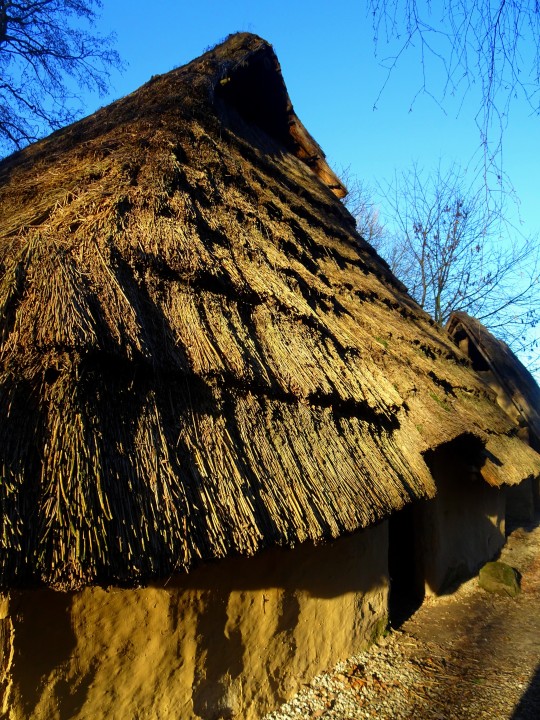
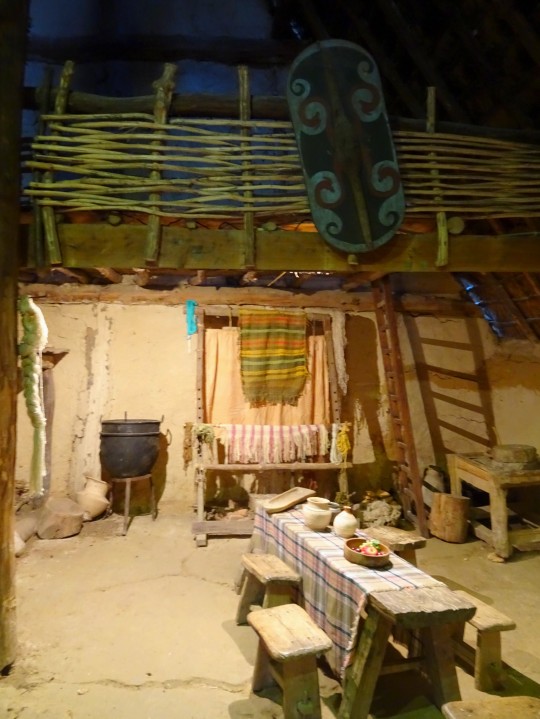
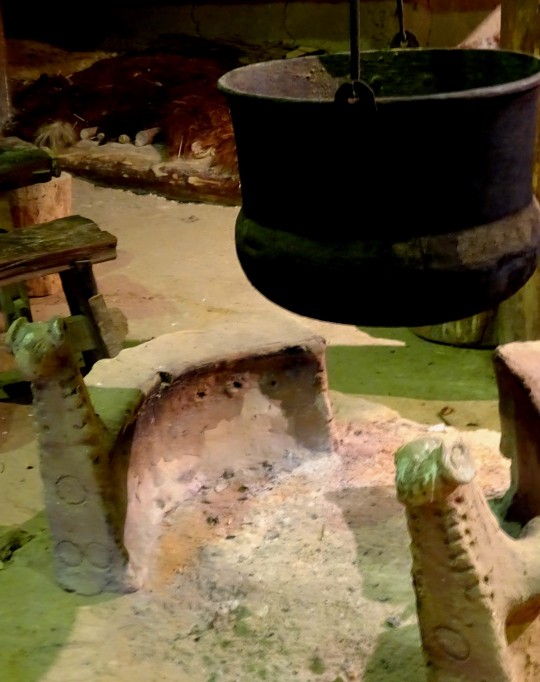
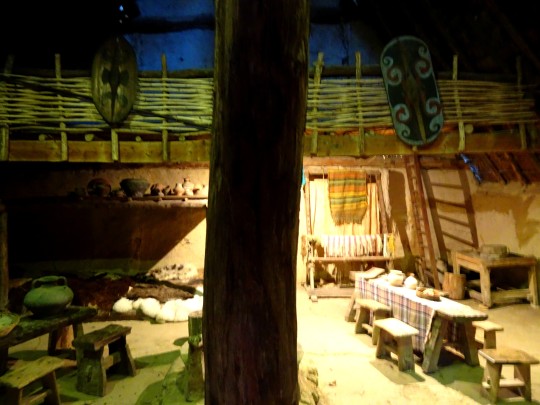
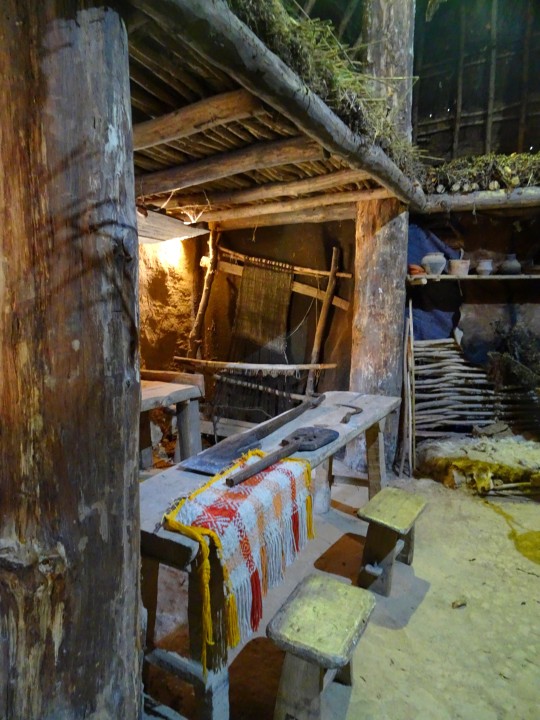
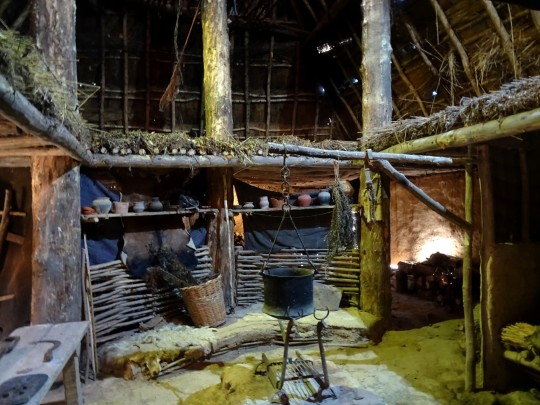
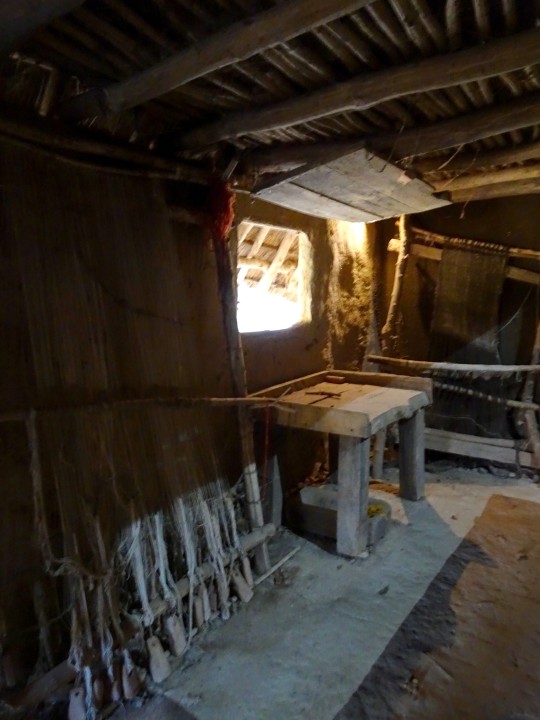
Petite balade en Wallonie, il y a 15 jours, plus précisément l'Archéo-site d'Aubechies. Ici des habitats reconstitués.
les 4 premières : habitat celtique de l'Âge du Fer, culture de la Tène, 100 av. J-C.
les 3 autres : habitat de l'Âge du Fer, culture de Hallstatt, 450 av. J-C.
#belgique#wallonie#aubechies#archéosite#archéologie#préhistoire#celte#celtique#gaulois#la tène#hallstatt#chaumière#chaumes#gaule
3 notes
·
View notes
Note
Is the Greenman an actual spirit? Or another weird Wiccan thing like the Holly King and the Oak King or whatever?
Well... there are a few layers to this one. So there is a TON of imagery from the ancient world depicting leafy faces in a way that we would recognize as a "greeman," including some from the La Tène culture (what we typically refer to as the Gaulish culture, but since it existed in a larger area than just Gaul archeologists tend to use La Tène instead). But for the most part, this seems to be just an artistic motif in the ancient world (as far as I can tell).
The concept of "the Greenman" as an entity seems to have popped up in England at some point, and had its official name "greenman" by the 16th century. In around the 1940s folklorists of the time were starting to write about the connection of the "greenman" to a pagan fertility figure and in the 1960s neopagans picked up that idea and ran with it.
So the short answer is that something we would recognize as the "greenman" existed in the ancient world but almost certainly is not used in a capacity that would be recognizable to them in their time, but ~possibly~ is an 'authentic' evolution of concept?
4 notes
·
View notes
Note
Do you have a link to the carbonised 6kya yarn?
I tried to find it to read more about it and i couldn't find it and it looks & sounds so cool.
The original post is on Facebook by the Laténium museum where the yarn is exhibited. (As the name suggests the museum houses finds from the area of the village La Tène, after which the La-Tène culture (450 BCE- 1century CE) is named. The yarn is from Marin-Epagnier which is right by La Tène but not from the so named culture but much older. Just to make that less confusing)
The post still says the yarn is made of either linen or nettle but I remember reading some research that proved it to be nettle, the link to which was shared on the "Nettles for Textiles" Facebook group at the time but I can't seem to find it anymore.
7 notes
·
View notes
Text
British Iron Age

The Wandsworth Shield, Iron Age shield boss in La Tène style, British Museum
"The British Iron Age is a conventional name used in the archaeology of Great Britain, referring to the prehistoric and protohistoric phases of the Iron Age culture of the main island and the smaller islands, typically excluding prehistoric Ireland, which had an independent Iron Age culture of its own. The Iron Age is not an archaeological horizon of common artefacts but is rather a locally-diverse cultural phase. The British Iron Age followed the British Bronze Age and lasted in theory from the first significant use of iron for tools and weapons in Britain to the Romanisation of the southern half of the island. The Romanised culture is termed Roman Britain and is considered to supplant the British Iron Age. The tribes living in Britain during this time are often popularly considered to be part of a broadly-Celtic culture, but in recent years, that has been disputed. ..."
W - British Iron Age

0 notes
Note
Idk if anyone's mentioned but is the 666 tattoo a reference to white supremacist-style triskelion? Is it, like, a reclaimation of it?
It is a reference to the triskelion, yes, but not in a white supremacist fashion, no, dear Lord! I've just always been very interested in paganism and folklore. It was a wildly used motif in the art of the Iron Age Celtic La Tène culture, especially, but it can be traced back to the European Neolithic and Bronze ages. No white supremacy here whatsoever, fear not!
ETA: Plus, here in France, the triskelion is often used by Bretons as a symbol of their region (Breizh). You see it everywhere, from bumper stickers to logos on menus in a lot of creperies.
1 note
·
View note
Text

Bien que cela ne s'appuie que sur peu de preuves tangibles on a supposé que la colonisation de la future Gaule par les Celtes originaires d'Europe centrale a débuté vers 1300 av. J.-C. avec la civilisation des champs d'urnes pour se terminer vers -70021. Il est possible toutefois que ce ne soit essentiellement que l'influence de la culture celtique qui se soit répandue sans être accompagnée d'une colonisation massive.
Les Celtes provenant des régions rhénanes (Rhin - Danube, forêt Hercynienne) étendent leur autorité sur le reste de la Gaule à la fin du vie siècle av. J.-C. et au début du ve siècle av. J.-C. C'est le second âge du fer ou période de la Tène. Cette nouvelle période d'expansion correspond à des transformations économiques et sociales. Les guerriers aristocrates peu nombreux sont remplacés par des paysans-soldats regroupés autour d'un chef de clan. L'araire à soc de fer remplace l'araire en bois. Il permet de labourer les terres lourdes du centre et du nord de la France actuelle. Ceci explique en grande partie la colonisation de terres nouvelles, la croissance démographique et les nouvelles invasions qui en ont résulté.
***
Although this is based on little hard evidence, it has been assumed that the colonization of the future Gaul by Celts originating from central Europe began around 1300 BC. J.-C. with the civilization of the fields of urns to end towards -70021. It is possible, however, that it was essentially only the influence of Celtic culture that spread without being accompanied by massive colonization.
The Celts from the Rhine regions (Rhine - Danube, Hercynian forest) extended their authority over the rest of Gaul at the end of the sixth century BC. J.-C. and at the beginning of the 5th century BC. This is the second Iron Age or La Tène period. This new period of expansion corresponds to economic and social transformations. The few aristocratic warriors are replaced by peasant-soldiers grouped around a clan leader. The plow with an iron plow replaces the wooden plow. It makes it possible to plow the heavy soils of the center and the north of present-day France. This largely explains the colonization of new lands, the population growth and the new invasions that resulted.
0 notes
Text
Planeando el viaje
Así comenzó, como un plan, ¿todo empieza con un plan?, ojalá, la mayoría de las cosas solo las haces, y ya.
Estúpida guerra, bueno, gracias a esta guerra es que pude conseguir boletos a precio de regalo para el primer tramo. Nadie quiere vacacionar por estos zarinos lares hoy día. Y sí, cada que se posa en mi cabeza la palabra, no puedo dejar de pensar en tantas guerras y en especial algunas batallas que hicieron que hoy fuera el mundo como es. Habrá quién diga que para mal o incluso para peor, pero a mí me fascina decir que siempre ha sido para bien e incluso para mejor. Anotemos para que no se me olvide: ¿imagina que no hubiesen existido las intensiones de los Medos para conquistar a los estados griegos?, ¿solo imagina que en Salamina no se hubiese logrado la unión de los orgullosos reyes?, gloriosos Medos y sus ambiciosos reyes. Lograron lo que nadie, dar forma y comunión al pensamiento que floreció en occidente. Ya anotaré sobre algún fantástico escenario con Alejandro huyendo de Gaugamela, o incluso muriendo en batalla, y celebrando la victoria alguno de sus generales. Esto de la historia alternativa es una belleza. Tramar un relato con la comunión de algunos generales macedonios y al menos un ambicioso y avispado celta de La Tène, incursionando en la corte de Filipo, tejiendo con paciencia y disciplina hasta llegar a ser el verdadero Hefestión. Y que fuese este nuevo consorte todo poderoso el que confabulara para que Dario tuviese una pírrica victoria a cambio de la cabeza de Alejandro, y que debilitara lo suficiente a los dos grandes todo poderosos para que la aun latiente civilización centroeuropea tomase el control militar y cultural… da para toda una novela. Explorar el verdadero origen de nuestra cultura, y las posibilidades de al menos dos alternativas, tan divertidas como enigmáticas. Todo montado en la flemática ilusión del libre albedrío, de la bella mentira: eres dueño de tu destino.
Pues ya está, comienza a moverse el tren, la adrenalina fluye y tengo ganas de escribir todo lo que pienso. Y sí, por fin, logro escribir.
Décadas tomó llegar hasta aquí. Solo con describir el plan me dará para cubrir al menos un tercio de la novela. Necesito iniciar por ahí, como dicen los que saben: cuenta la historia en orden, de inicio a fin, di lo que quieres decir y ya luego le vas poniendo adornos y la deshaces tanto como sea necesario para que te guste lo que cuentas.
Quiero traer el hilo conductor de esta idea que tengo dando vueltas, sobre el génesis de la identidad judeocristiana occidental… Entonces, ¿en dónde comenzará la historia? Recuerdo que en Oaxaca, un 23 de diciembre, hablando sobre la tradición de la misa de San Silvestre, surgió ese primer esbozo de un mesías soportado en los textos de Plinio ¿O me llevo la historia hasta el hermoso relato del “Dios de Abraham”?
Comienza todo en la costa de un mar interior. El personaje llega con algunos peces para ser cambiados por sal y semillas. ¡Ya está! Por ahí pronto aparecerá el que será un abuelo de Abraham, antes de que sea necesario inventarse un dios a modo. Gloriosa religión con un Dios que te pide ser pobre y que no anheles la salud y riqueza de tus amos, a cambio de ¡vida eterna! Vaya premio, unos “pocos años" de miseria y sufrimiento, a cambio del gozo eterno. Sin duda el mejor, invento de la historia.
Carajo, sabia que iba a doler, pero… ya está. Ahora, lo que se planeó por más de media vida. ¡Ah!, se siente como suponía, es caliente… ¡ah! ¡Duele mucho! ¡Soy un imbécil! ¡Debí haber usado el revólver! ¡Todo por no querer tener el sabor de la pólvora en la boca! ¡Idiota!
Que romántico final, con una hoja Tanto perfectamente afilada en la porción izquierda del pecho con la precisión de alguien que pretendía explicar como es que la masa acelerada a la velocidad de la luz, usando los medios apropiados, hubiese permitido el viaje a través del tiempo para entidades conscientes. Corta las arterias sin perturbar el corazón. Así logra controlar el intenso dolor y compra un boleto de algunos minutos que le permite viajar de San Petersburgo a Ulan Bator, para escribir la novela que le permitiría vivir las semanas que duraría el viaje, y quedarse allá para aprender el idioma y seguir escribiendo. Mucho más civilizado que volarse la cabeza con un calibre 12, o con una 38 especial en la boca. Sale la hoja, y todo está por acabar. El dolor en el pecho es insoportable, pero llega la paz con un brutal sonido que revienta los oídos.
Sabia que dolería, por eso tomó tanto tiempo comenzar el viaje.
0 notes
Photo



Late Iron Age mirror found near Didcot (Oxfordshire, 1st century BC).
The Oxfordshire Mirror was cast from molten bronze, and then hammered out to make it flatter once the bronze had cooled. It is decorated in a curvilinear, La Tène-style pattern.
#history#prehistory#iron age#britain#prehistoric britain#iron age britain#england#la tène culture#oxfordshire#didcot
178 notes
·
View notes
Photo

A horned figure on the Celtic Gundestrup Cauldron
108 notes
·
View notes